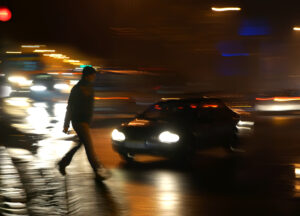A new University of Georgia study has found heat safety problems in bounce houses can put children in danger. The findings are based on experiments with a bounce house on the UGA campus in July 2015, with weather conditions representative of a typical summer day in the area.
The study examined specific research questions that compared temperature and moisture conditions inside the bounce house to ambient outdoor conditions, and whether such differences might reach levels that pose health risks. For a 92-degree summer day in Athens, Georgia, the bounce house added almost 4 degrees to the temperature. But peak bounce house temperatures exceeding 100 F were almost 7 degrees Fahrenheit more than outside temperatures.
According to Marshall Shepherd, UGA Athletic Association Distinguished Professor of Geography and Atmospheric Sciences, this research is a preliminary look at something that no one has really examined in the published literature. He said he knew it was a problem when he watched his own child in one on a particularly hot day and the early findings of the study confirmed his suspicions and hopefully it makes parents more aware of something they probably overlooked.
Andrew Grundstein, UGA professor of geography and co-author on the study said “Heat illnesses like heat stroke can be deadly and occur in children participating in sports, left alone in parked cars, and as our study shows, potentially when playing in bounce houses. Children are more sensitive to heat than adults and parents need to carefully watch their children for signs of overheating when active on hot and humid days. Signs there is a problem may include fatigue, nausea, vomiting, dizziness, and flushed, moist skin.”
The new article, “Do Inflatable Bounce Houses Pose Heat-related Hazards to Children,” was published in the early online edition of the Bulletin of the American Meteorological Society.

As a partner with D'Arcy Johnson Day, Andrew D'Arcy has been involved in some of the nation’s most high-profile cases and investigations. His practice includes serious automobile accidents, medical malpractice, wrongful death and product defect cases. Andrew has been personally responsible for numerous multi-million dollar settlements and verdicts on behalf of his clients. He has been recognized by his peers as an "AV" rated attorney, the highest possible rating given by Martindale-Hubbell publication. Andrew has been named a "Super Lawyer" by New Jersey Monthly magazine each year consistently since 2013.










Comments for this article are closed.